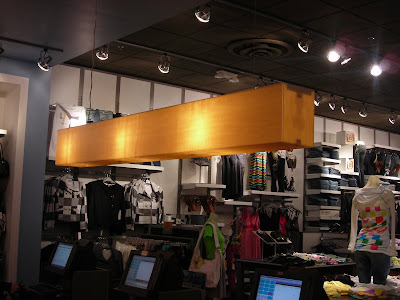
This fixture is located over the register area. Made from wood veneer as well and serves purely for accents lighting, however, these two lamps make the space.
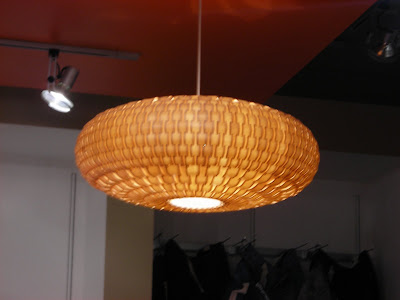
This fixture is located towards the back of the store. There is two and they made from a (i believe) wood veneer material. They give a slight glow to the close surroundings. However, they are more for accent lighting than functionality.
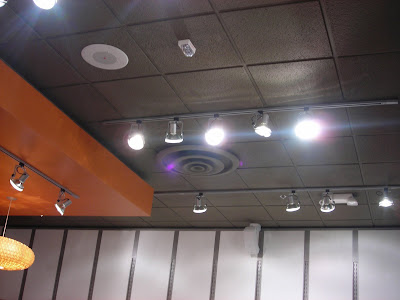
Pacsun is a retail store located at Four Seasons Mall (as well as many other malls). I have worked there for almost a year now so I have seen first hand how they position lights and what type of lighting is used. Track lighting is the main lighting (so do many retail stores) to direct light on certain places, items, any where they feel light needs to be. Pacsun shines light on products that are new and best sellers (usually placed on the wall). The light like "showcases" the product much like an art piece in a gallery (Weatherspoon for instance). The only issue with these lamps is they produce a large amount of heat and are somewhat bright. Most of the track lighting is directed towards the product on the wall.
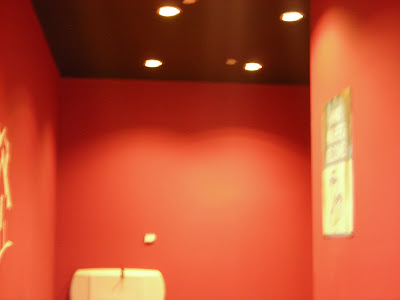
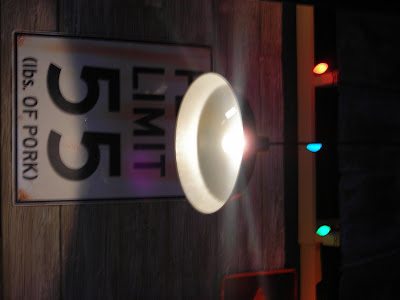
The two above pictures show the main types of lighting. Direct lighting above and above that is recessed lighting with wall washing. The direct lighting is used over the booths for a brighter look. recessed is located throughout the restaurant. They provide a great amount of light and make the space feel bigger.
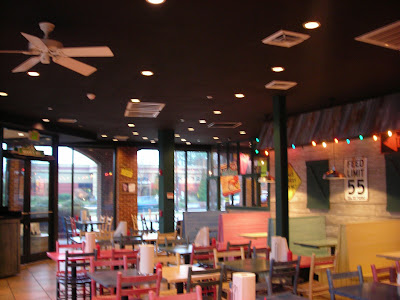
Here you can see light recessed on the black ceiling. These seemed to be randomly placed throughout, giving an even amount of light in the space. Lots of windows to provide natural light.
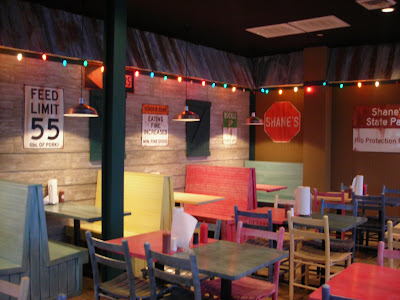
In Shane's Rib Shack, direct task lighting is located over the booths. They are fairly bright bit not too bright to disrupt the task being performed. The colored 'Christmas' lights serve no purpose other than decoration or accent lighting.
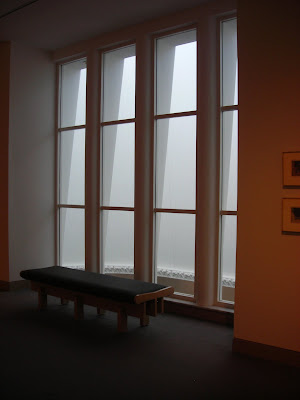
This is an interior window. The light that enters through this window is coming from the hallway lights and exterior windows. This window really opens up the gallery allowing some different lighting. However, it is not too bright like sunlight.
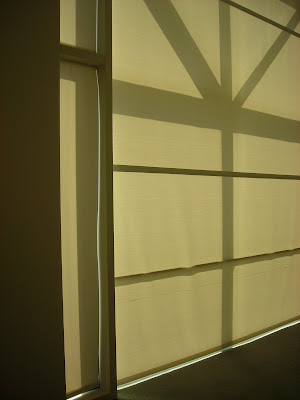
This is an exterior window with a shade pulled down to reduce the amount of sunlight within the space. Having the shade pulled down creates a glow, nothing direct.
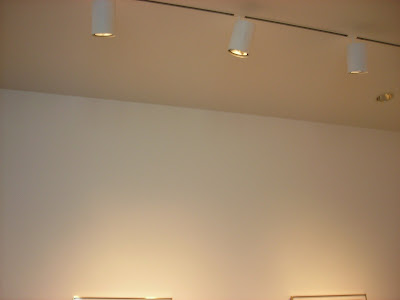
In this picture, accent lighting is clearly noticed. Each light goes to a specific piece of art. It not only brighten the art but creates a glow around the art. This too serves as a frame for the artwork.
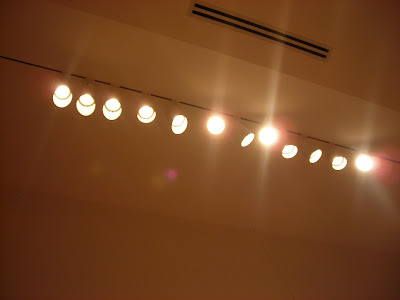
This is a closer view of the track lighting in the space. As you can see, they are distinctly placed according to the art piece. the lighting specialist (which they have) must take into consideration the size of the art, colors, materials, how it is viewed and many other factors.
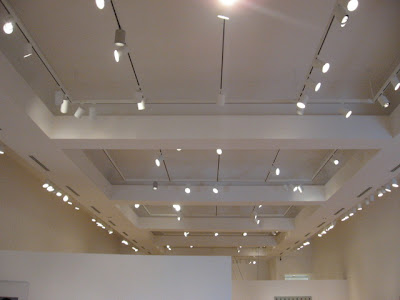
The illumination in the art museum was done nicely. Each art piece had a selected amount lamps that were specifically directed on it. This made viewing the art pieces much easier. With high volted ceilings, the track lighting puts a nice glow on the walls as well as the art. One issue i noticed was how hot the lights were. Could that be harmful to the art?




































